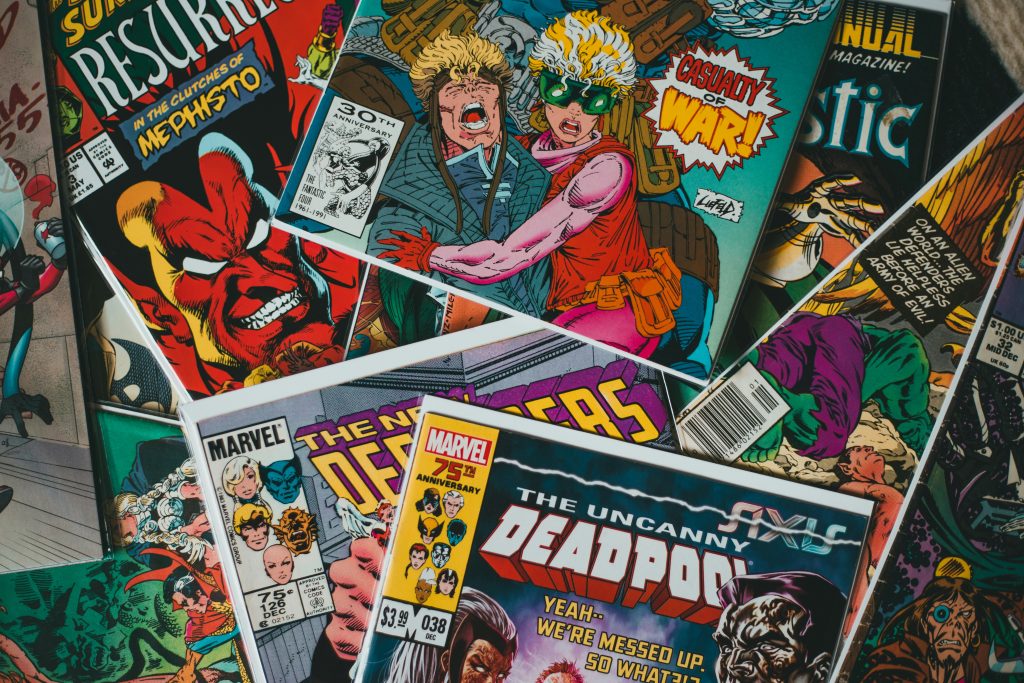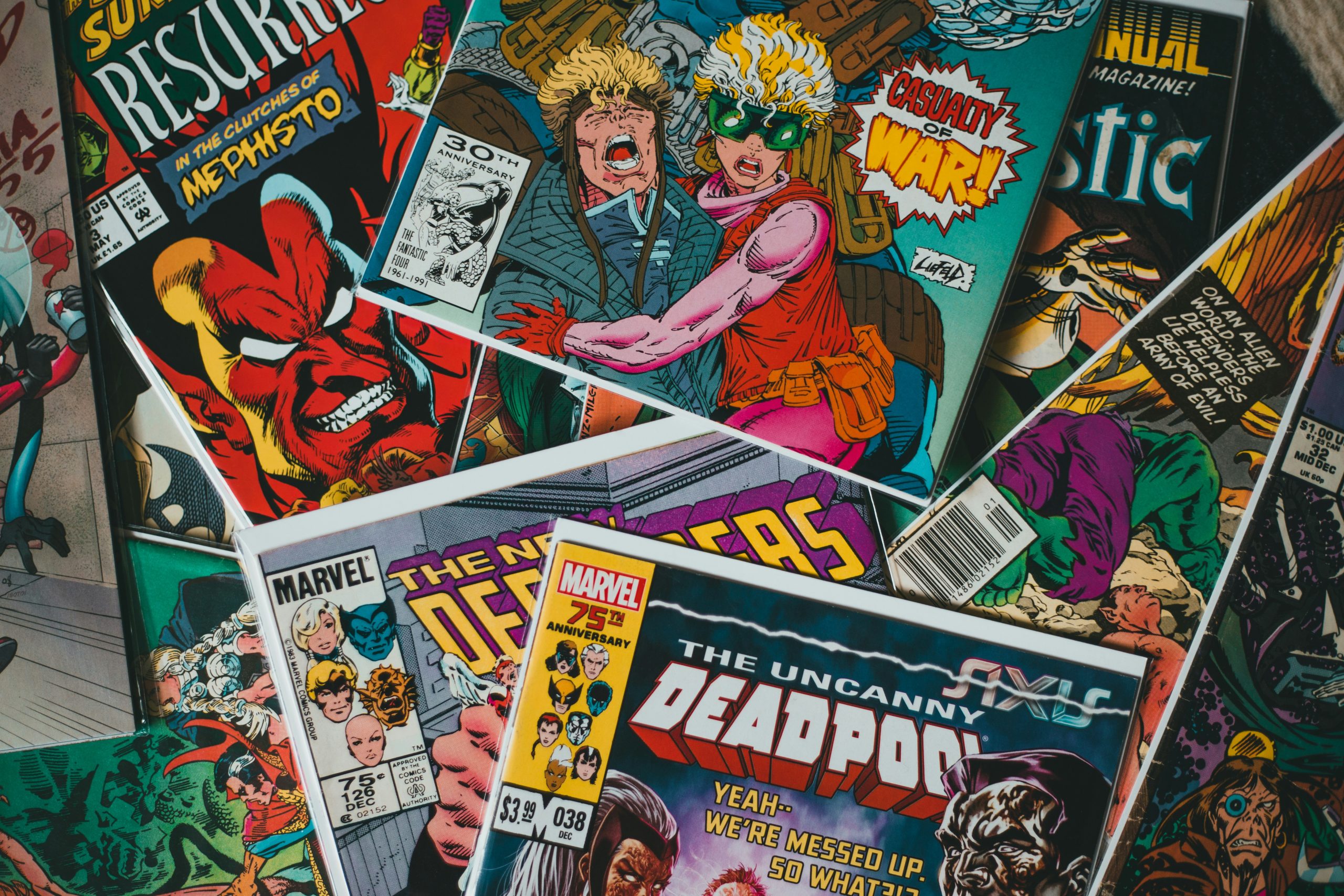
Comics, the sequential art form that combines images and text to tell stories, have captivated audiences across the globe for generations. This article delves into the multifaceted world of comics, examining their history, cultural significance, genre diversity, and enduring appeal.
Origins of Comics
Ancient Roots
The origins of comics can be traced back to ancient civilizations, where pictorial narratives were used to depict stories and convey information. Examples of early comics include Egyptian hieroglyphs, Greek vase paintings, and medieval tapestries, which all employed visual storytelling techniques.
The Emergence of Modern Comics
The modern comic book as we know it today began to take shape in the 19th century with the advent of mass printing technologies. Early comic strips, often featuring humorous or satirical content, gained popularity in newspapers and magazines. Pioneering artists like Richard F. Outcault (“The Yellow Kid”) and Winsor McCay (“Little Nemo in Slumberland”) played pivotal roles in establishing the medium’s visual language and narrative conventions.
Evolution of Comics
Golden Age of Comics
The 1930s and 1940s marked the Golden Age of Comics, characterized by the rise of superhero comics and iconic characters such as Superman, Batman, and Wonder Woman. These characters, created by visionaries like Jerry Siegel, Joe Shuster, Bob Kane, and William Moulton Marston, captured the imaginations of readers and laid the foundation for the modern comic book industry.
Silver Age and Beyond
The Silver Age of Comics (1950s-1970s) saw a resurgence of superhero comics, as well as the emergence of new genres and storytelling approaches. Marvel Comics, under the guidance of Stan Lee, Jack Kirby, and Steve Ditko, revolutionized the industry with characters like Spider-Man, the X-Men, and the Fantastic Four. These comics introduced complex characters, moral ambiguity, and social commentary, reflecting the changing cultural landscape of the era.
Cultural Significance of Comics
Reflection of Society
Comics often serve as a reflection of society, addressing social issues, cultural norms, and political ideologies. Superhero comics, in particular, have been used to explore themes of justice, morality, and the struggle between good and evil. Additionally, comics have played a role in challenging stereotypes, advocating for diversity and inclusion, and promoting social change.
Educational Tool
Comics have also proven to be valuable educational tools, used in classrooms to engage students and enhance learning. Educational comics cover a wide range of subjects, from history and science to literature and mathematics. By combining visuals with text, comics make complex concepts more accessible and enjoyable for learners of all ages.
Genre Diversity in Comics
Superhero Comics
Superhero comics remain one of the most popular and enduring genres in the medium. These comics typically feature characters with extraordinary abilities who fight crime and protect the innocent. While superhero stories often involve action-packed battles and larger-than-life conflicts, they also explore themes of identity, responsibility, and the human condition.
Alternative and Independent Comics
Alternative and independent comics offer a diverse range of storytelling styles and subject matter outside the mainstream superhero genre. These comics cover a wide spectrum of genres, including slice-of-life, horror, science fiction, fantasy, and autobiography. Artists and writers in this space have the freedom to experiment with unconventional narratives, art styles, and themes, appealing to readers seeking innovative and thought-provoking content.
Graphic Novels
Graphic novels, long-form comics that tell complete stories, have gained widespread recognition as a legitimate literary form. These works often tackle complex themes and narratives with the depth and sophistication of traditional novels. Graphic novels like “Maus” by Art Spiegelman, “Persepolis” by Marjane Satrapi, and “Watchmen” by Alan Moore and Dave Gibbons have received critical acclaim and broadened the audience for comics as a literary medium.
Global Influence of Comics
International Reach
Comics have a global reach, with artists and readers spanning continents and cultures. While American superhero comics have dominated the industry for much of its history, comics from other countries have also made significant contributions to the medium. Manga from Japan, bande dessinée from France, and manhwa from South Korea are just a few examples of thriving comic traditions around the world.
Cross-Cultural Exchange
Comics have facilitated cross-cultural exchange and collaboration, with artists and writers drawing inspiration from diverse sources and traditions. This exchange has enriched the medium, leading to innovative storytelling techniques, artistic styles, and thematic exploration. Additionally, the global popularity of comics has fueled interest in translation, localization, and adaptation, allowing stories to reach new audiences in different languages and formats.
Challenges Facing the Comic Industry
Diversity and Representation
One of the ongoing challenges facing the comic industry is the need for greater diversity and representation in both creators and characters. While progress has been made in recent years, comics still struggle with issues of gender, racial, and LGBTQ+ representation. Efforts to promote inclusivity and amplify marginalized voices are essential for ensuring that comics reflect the diversity of human experiences.
Digital Disruption
The rise of digital technology has disrupted the traditional comic book market, presenting both opportunities and challenges for creators, publishers, and retailers. Digital comics offer greater accessibility and convenience for readers, but they also raise concerns about piracy, distribution, and monetization. Additionally, the transition to digital platforms has forced the industry to adapt its business models and marketing strategies to remain competitive in an increasingly digital landscape.
Future Prospects of Comics
Technological Innovation
The future of comics is likely to be shaped by technological innovation, with digital platforms, augmented reality, and virtual reality offering new possibilities for storytelling and engagement. These technologies have the potential to enhance the immersive experience of reading comics, allowing readers to interact with characters and worlds in unprecedented ways.
Continued Evolution
Comics will continue to evolve and adapt to changing cultural, technological, and social trends. The rise of webcomics, crowdfunding platforms, and self-publishing has democratized the medium, allowing independent creators to reach audiences directly and experiment with new formats and genres. As comics continue to diversify and expand their reach, they will remain a vibrant and vital form of artistic expression and storytelling for years to come.
Conclusion
Comics are a dynamic and versatile medium that has captivated audiences for centuries. From their humble origins to their current status as a global cultural phenomenon, comics continue to evolve and innovate, reflecting and shaping the societies in which they exist. With their unique blend of visual artistry and narrative storytelling, comics offer endless possibilities for creativity, imagination, and exploration. As the medium continues to evolve, its influence and impact on popular culture and society are likely to endure for generations to come.
